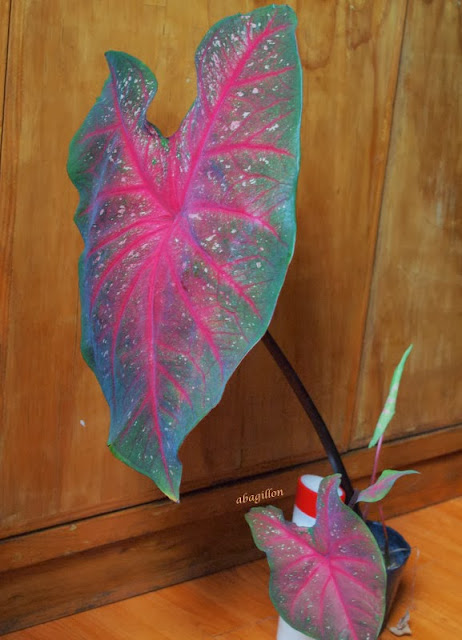I took a leave from the office for two days last week, Thursday and Friday. I attended our University Loyalty Day on 10 October for the much awaited bonding with batchmates and friends, getting older seeks the same age range i think! We had lunch and dinner, and the parade in the afternoon was exciting. Both the Ex Chancellor and the Now Chancellor are batchmates, and they marched with us. Bonding, talking, reminiscing, laughing and more eating happened from dinner onwards. A few of us even slept at a friend's house a bit at the rural side near a stream, furnitures looking like antiques. They turned their house to be a cozy restaurant and massage place using the traditional "hilot" massage. These services just started and presently they just cater to friends and friends' friends. Imagine having a wonderful massage with the natural music of the stream! So after a lot of bonding talks and massage, we had a wonderful sleep.
In the morning they dropped me at the Institute of Plant Breeding in the University complex. I had to get my order of hoya rooted cuttings. The staff arrived at 9:00am so i had one hour taking pictures around the research complex. If waiting for someone is not so exciting, this is the exact opposite as it seemed one hour is not enough.
The attractive and special vegetarian dish prepared by our equally attractive batchmate, Dr. Pam Fernandez. It is always the first dish to finish, not only because it's very colorful but because many are curious of the taste of individual flowers. Some didn't know that a particular common flower can be eaten.
Tuntungin Hill as viewed from the Institute of Plant Breeding.
These are structures that are built mainly for function rather than beauty, but they evoke lots of memories! Even these plants have been here for many years.
When i finished taking shots of the flowers, i saw these white things behind the hedges at the other side of the field. My lens didn't give much justice to them but that's fine, as I don't see them often. I am always inside a moving vehicle when i see them, and getting photos were not possible. This time only the lens is the problem, but that's fine as well. I am gathering memories.
Cattle egrets (
Bubulcus ibis) are called such because they are normally seen with cattles or big livestock. They are lazy feeders so they don't hunt food, but take advantage of the insects and worms around the livestock. Cattles are absent here but they are taking advantage of the newly mowed field. The tractor is near me, just finished mowing this whole lot. The tractor driver said these birds are getting the earthworms that surfaced after the mowing.
That was a wonderful morning, gathering a lot of things: memories, pictures, seeds and hoyas.











































